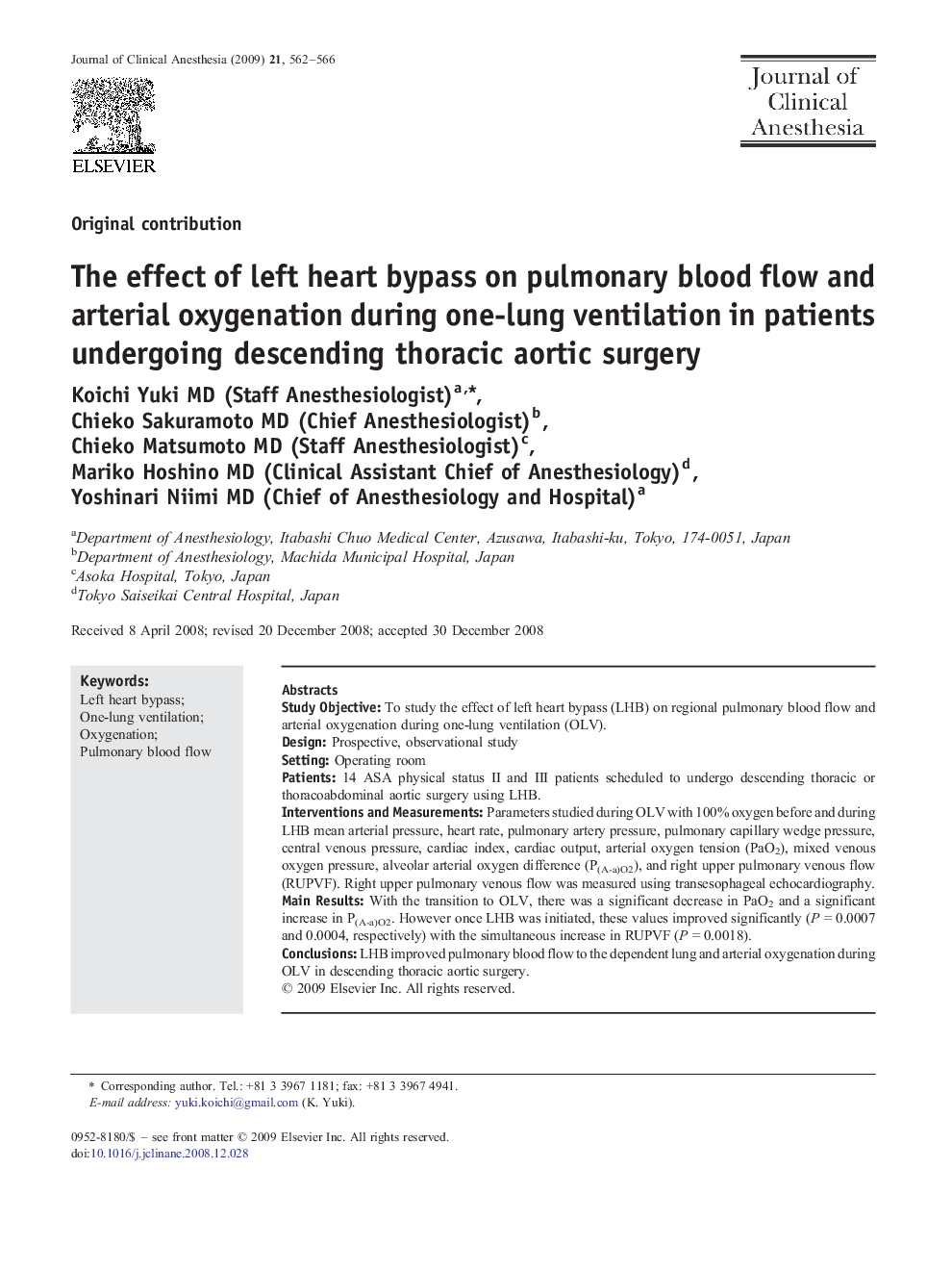| Article ID | Journal | Published Year | Pages | File Type |
|---|---|---|---|---|
| 2763265 | Journal of Clinical Anesthesia | 2009 | 5 Pages |
sStudy ObjectiveTo study the effect of left heart bypass (LHB) on regional pulmonary blood flow and arterial oxygenation during one-lung ventilation (OLV).DesignProspective, observational studySettingOperating roomPatients14 ASA physical status II and III patients scheduled to undergo descending thoracic or thoracoabdominal aortic surgery using LHB.Interventions and MeasurementsParameters studied during OLV with 100% oxygen before and during LHB mean arterial pressure, heart rate, pulmonary artery pressure, pulmonary capillary wedge pressure, central venous pressure, cardiac index, cardiac output, arterial oxygen tension (PaO2), mixed venous oxygen pressure, alveolar arterial oxygen difference (P(A-a)O2), and right upper pulmonary venous flow (RUPVF). Right upper pulmonary venous flow was measured using transesophageal echocardiography.Main ResultsWith the transition to OLV, there was a significant decrease in PaO2 and a significant increase in P(A-a)O2. However once LHB was initiated, these values improved significantly (P = 0.0007 and 0.0004, respectively) with the simultaneous increase in RUPVF (P = 0.0018).ConclusionsLHB improved pulmonary blood flow to the dependent lung and arterial oxygenation during OLV in descending thoracic aortic surgery.
